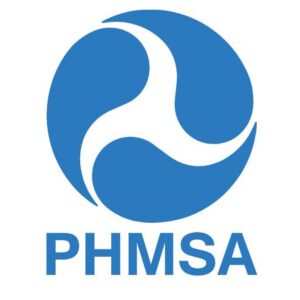
The Interstate Natural Gas Association of America (INGAA) offers these comments on the Notice of Proposed Rulemaking (NPRM) issued by the Pipeline and Hazardous Materials Safety Administration (PHMSA) on April 8, 2016.
INGAA is a trade association representing approximately two-thirds of the nation’s natural gas transmission pipeline systems. INGAA’s 24 members operate approximately 200,000 miles of interstate gas transmission pipelines.
Pipeline safety is the top priority of INGAA and its members. INGAA strongly supports regulations that embrace and advance improvements in pipeline safety practices, with the intent of achieving the goal of zero incidents. For the last 15 years, INGAA members have achieved significant advances in safety through implementation of PHMSA’s integrity management regulations in Subpart O of Part 192. INGAA supports the process of risk and threat identification, prioritization, data integration, prevention and mitigation, with the foundation of continuous improvement.
Based on its commitment to safety, INGAA advanced its Integrity ManagementContinuous Improvement (IMCI) initiative in 2011. The scope of this voluntary initiative is
broad, extending the protections of integrity management practices beyond High Consequence Areas (HCAs) to all people living, working and recreating near an interstate natural gas transmission pipeline. INGAA has engaged with many stakeholders, including PHMSA, state regulators, the National Transportation Safety Board (NTSB), and various public advocacy groups (including the Pipeline Safety Trust) to develop specific programs to advance IMCI commitments. The lessons learned from operators’ experiences are significant. In considering additional regulatory initiatives, PHMSA should consider and apply the lessons learned from INGAA’s experience.
broad, extending the protections of integrity management practices beyond High Consequence Areas (HCAs) to all people living, working and recreating near an interstate natural gas transmission pipeline. INGAA has engaged with many stakeholders, including PHMSA, state regulators, the National Transportation Safety Board (NTSB), and various public advocacy groups (including the Pipeline Safety Trust) to develop specific programs to advance IMCI commitments. The lessons learned from operators’ experiences are significant. In considering additional regulatory initiatives, PHMSA should consider and apply the lessons learned from INGAA’s experience.
INGAA has identified key provisions in the NPRM that PHMSA should modify to improve pipeline safety. In several instances, the NPRM requirements will have unintended consequences that actually hinder the continued advancement of pipeline safety practices. They also will increase safety risks and adverse environmental impacts, discourage the implementation of advanced technologies, and adversely affect the reliability of the national natural gas pipeline grid. INGAA offers alternative approaches and regulatory language that would more effectively promote safe pipeline practices and meet the goals of the NPRM without compromising the reliable delivery of natural gas.
Given the complexity of the NPRM, INGAA urges PHMSA to convene a public workshop to permit stakeholders and interested entities to identify and discuss their concerns and possible alternatives to the NPRM. If PHMSA does not convene a workshop, then INGAA is willing to work with the PHMSA and other trade associations, state regulators, and public representatives to provide an open public forum to discuss comments filed by stakeholders to the NPRM.
Attachment 4: INGAA’s examples of acceptable traceable, verifiable, and complete
Attachment 6: INGAA’s Cost Industry Impact Analysis
Attachment 7: BMT Fleet Technology Fatigue Considerations for Natural Gas Transmission Pipelines
Attachment 8: INGAA’s White Paper on Interacting Threats
Attachment 9: Kiefner Report on Basics of Metal Fatigue in Natural Gas Pipeline







